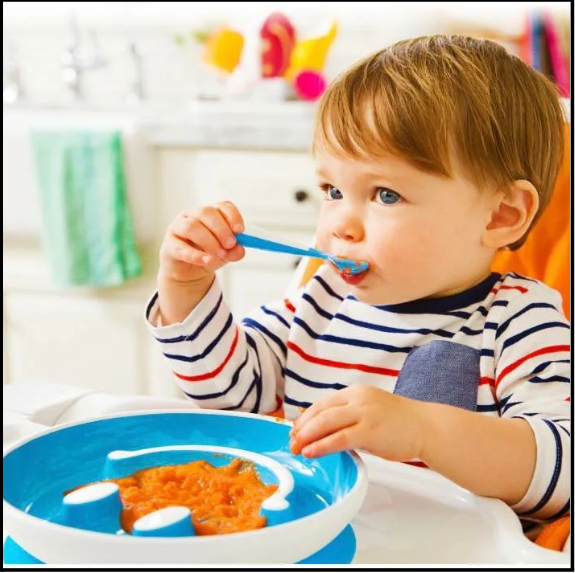Feeding babies and toddlers is exciting but can be challenging. They are developing tastes, textures, and habits that shape their relationship with food for years. Providing healthy, nutrient-rich meals helps them grow strong, supports brain development, and sets the foundation for lifelong healthy eating habits.
This post helps to explore a variety of healthy recipe ideas for babies and toddlers, practical tips to make mealtimes easier, and ways to introduce essential nutrients without stress. If your little one is just starting solids or exploring finger foods, there are plenty of ways to make meals fun, delicious, and nourishing.
Why Balanced Nutrition Matters for Little Ones
Babies and toddlers have unique nutritional needs. Their growing bodies require a balance of proteins, carbohydrates, healthy fats, vitamins, and minerals. Proteins are crucial for muscle growth and tissue repair, while healthy fats support brain development.
Vitamins and minerals like iron, calcium, and vitamin D help strengthen bones, support the immune system, and promote overall growth. Introducing a variety of foods early encourages a broad palate and reduces picky eating tendencies later.
For parents looking to enhance protein intake in their little one’s diet, there are practical ways to include plant-based and animal-based proteins throughout the day. You can find some helpful strategies and recipe ideas for boosting protein in young children’s meals here.
Breakfast Ideas for Growing Babies
Starting the day with a nutrient-rich breakfast helps stabilise energy levels and supports cognitive development. Here are some simple options:
- Oat and Fruit Porridge
Cook oats until soft and stir in mashed banana or apple purée. Sprinkle it with cinnamon for extra flavour. For babies ready for textures, add finely chopped soft fruits. - Mini Vegetable Omelettes
Whisk eggs with finely grated carrot, spinach, or courgette. Cook into thin omelettes and cut into finger-friendly strips. These omelettes are packed with protein and nutrients, perfect for little hands to hold. - Yoghurt and Berry Parfait
Layer plain full-fat yoghurt with mashed berries and crushed oats. It provides a balance of calcium, protein, and natural sweetness while being easy to prepare.
Lunch and Dinner Recipes for Toddlers
As toddlers become more adventurous with food, offering a mix of textures and flavours is key. Here are some lunch and dinner ideas:
- Soft Vegetable Pasta
Use small pasta shapes with a gentle tomato sauce and finely grated vegetables like carrots or courgettes. Sprinkle it with a little cheese for extra calcium. - Mini Chicken and Vegetable Skewers
Thread small pieces of chicken and soft vegetables onto skewers for fun finger food. Bake until cooked through. - Mashed Sweet Potato with Fish
Flaked fish such as salmon or cod paired with mashed sweet potato provides rich omega-3 fatty acids and vitamins essential for brain and body development. - Lentil and Vegetable Soup
A comforting option for chilly days. Lentils provide protein and fibre, while soft vegetables make it easy for toddlers to eat and digest.
For parents introducing solids around six months, you might find this collection of simple and nutritious recipes for 6 months helpful. It provides age-appropriate ideas to ensure your baby enjoys healthy, varied meals from the start.

Snack Ideas for Little Ones
Healthy snacks play a crucial role in keeping toddlers fuelled between meals. Some nutritious, simple options include:
- Soft fruit slices, like pear, banana, or kiwi
- Steamed vegetable sticks, such as carrot or broccoli florets
- Small cubes of cheese or avocado spread on toast fingers
- Homemade energy bites with oats, mashed banana, and a touch of yoghurt
Offering finger foods helps toddlers develop independence and improves fine motor skills while keeping meals interesting.
Tips for Encouraging Healthy Eating Habits
- Plan Ahead: Preparing meals and snacks in advance reduces stress and ensures variety.
- Mix Familiar with New: Pair new foods with ones your child already enjoys to encourage trying new flavours.
- Make Meals Colourful: Visual appeal matters; a colourful plate encourages curiosity and engagement.
- Involve Your Child: Allow toddlers to help with stirring or arranging ingredients, it builds excitement and independence.
- Stay Patient: Repeated exposure to foods is key. A toddler may need to try a new ingredient 10–15 times before accepting it.
These small, practical strategies help toddlers develop positive associations with food and establish healthy routines early.
Making Mealtimes Fun and Stress-Free
The goal is to create enjoyable, interactive mealtimes. Here are ways to make it easier:
- Use fun shapes for fruits, vegetables, and pancakes.
- Offer foods with varying textures and colours.
- Encourage self-feeding with age-appropriate utensils.
- Sit together as a family to model positive eating behaviour.
A relaxed environment encourages children to explore new foods confidently while reducing mealtime battles.
Nourishing Growth with Balanced Recipes
Healthy recipes for babies and toddlers should balance essential nutrients with taste and texture. Incorporating a variety of proteins, vegetables, fruits, and whole grains ensures little ones get the energy and vitamins they need to thrive.
Batch-cooking vegetable soups or omelettes saves time on busy weekdays while keeping nutrition consistent. By introducing new flavours gradually and making mealtimes engaging, parents can foster lifelong healthy eating habits.

Helping Your Little One Thrive
Creating meals that support healthy growth is easier with the right tools and resources. From age-appropriate recipe ideas to tips for encouraging safe self-feeding, small steps build confidence, independence, and a love for nutritious food. For parents seeking further guidance, Piccolo offers practical tips, recipes, and inspiration to make healthy, happy mealtimes part of every day.



